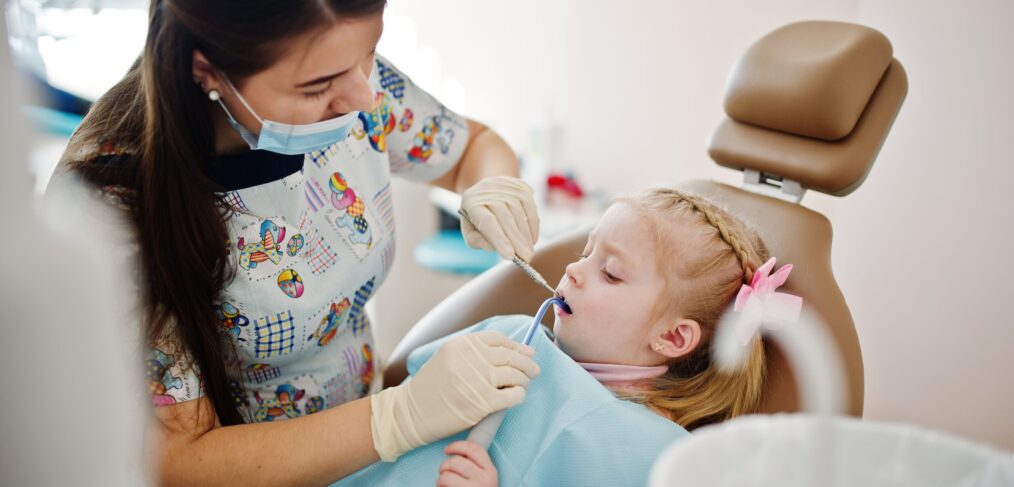Discover 7 key benefits of preventive orthodontics for children and how early dental care ensures healthy, straight teeth – Bee Cave Orthodontics – Austin, Texas
Preventive orthodontics is an essential aspect of dental care that focuses on addressing potential orthodontic issues in children before they become more serious problems. This early intervention can set the foundation for healthy, straight teeth and improve overall oral health as children grow. In cities like Austin, Texas, orthodontists are emphasizing the importance of preventive care to ensure that children avoid complications later in life.

In this blog, we’ll explore the key benefits of preventive orthodontics for children and why it’s crucial to begin orthodontic care early.
1. Early Detection of Issues: Orthodontics for Children
One of the main advantages of preventive orthodontics is the ability to detect problems early. Children often show signs of orthodontic issues such as crowding, crooked teeth, or an improper bite at a young age. By bringing your child to an orthodontist early, these issues can be identified and addressed before they worsen.
Orthodontists, recommend that children have their first orthodontic evaluation by the age of 7. At this age, the teeth and jaw are still developing, making it easier for orthodontists to identify potential issues and create a customized treatment plan. Early detection is key to minimizing the need for more complex treatments later.
- Early detection helps prevent worsening of dental issues.
- Regular orthodontic check-ups ensure your child’s teeth are growing in the right direction.
2. Guiding Proper Jaw Growth
Preventive orthodontics focuses not only on the teeth but also on the development of the jaw. As children grow, their jawbone is still malleable, making it an ideal time to guide its proper development. Misaligned jaws can lead to bite problems, such as overbites or underbites, which may require more invasive treatments if not addressed early.
By using appliances like expanders or space maintainers, orthodontists can ensure that the jaw develops correctly, making room for permanent teeth and reducing the chances of overcrowding or malocclusion. In Austin, Texas, orthodontists frequently use these preventive methods to help shape the jaw and set children up for long-term oral health.
- Preventive orthodontics can correct jaw growth issues before they become severe.
- Early intervention reduces the need for future surgeries or complex treatments.
3. Reducing the Need for Future Extractions
When orthodontic issues are not addressed early, one common outcome is the need for tooth extractions to make room for other teeth. Crowding is a common issue among children and teens, where teeth don’t have enough space to grow properly, causing them to overlap or grow in crooked.
Preventive orthodontics, however, can often eliminate the need for extractions by creating space for teeth to grow naturally. By intervening early, orthodontists can prevent overcrowding and ensure a healthy alignment as permanent teeth come in. This not only saves time and discomfort but also contributes to a more natural and comfortable bite.
- Early treatment can prevent the need for tooth extractions.
- Preventive care encourages natural tooth growth and alignment.
4. Correcting Harmful Habits
Children often develop habits, such as thumb-sucking or tongue thrusting, that can negatively impact their teeth and jaw development. These habits can lead to misaligned teeth, open bites, or other orthodontic problems. Preventive orthodontics can help detect these habits early and provide solutions to correct them before they cause long-term damage.
For example, thumb-sucking beyond a certain age can cause the upper front teeth to tilt forward, leading to bite issues and aesthetic concerns. Orthodontists in Austin, Texas, can provide advice and, if necessary, appliances to discourage these harmful habits. Addressing these behaviors early ensures that a child’s teeth and jaw develop correctly.
- Preventive orthodontics helps stop bad habits that could cause long-term dental issues.
- Early correction ensures proper development of the teeth and jaw.
5. Boosting Confidence and Self-Esteem
For many children, dental issues can affect their self-esteem, particularly during school years when social interactions are critical to their development. Crooked teeth or bite problems can make children feel self-conscious about their smiles. Preventive orthodontics can improve a child’s smile early on, helping to boost their confidence and self-image.
When children have straight, healthy teeth, they are more likely to smile, speak confidently, and engage with their peers. In Austin, Texas, parents recognize the psychological benefits of early orthodontic care in building self-assured children. A beautiful, healthy smile goes a long way in contributing to a child’s overall well-being.
- Straight teeth and a healthy smile can significantly boost a child’s self-confidence.
- Early orthodontic treatment helps children feel good about their appearance.
6. Minimizing the Duration of Treatment in the Future
One of the greatest benefits of preventive orthodontics for children is that it can minimize the length and complexity of future treatments. By addressing issues like crowding, misalignment, or improper jaw growth early, orthodontists can often shorten the amount of time a child will need braces or other orthodontic appliances.
In many cases, children who receive early treatment may only need braces for a shorter duration, or in some cases, may not need them at all. This not only saves time but also reduces the overall cost and discomfort associated with prolonged orthodontic treatment.
- Early treatment reduces the length of time your child may need braces.
- Preventive orthodontics lowers the complexity and cost of future treatments.
Invest in Your Child’s Smile Early
Orthodontics for children offers a proactive approach to ensuring that children develop healthy, straight teeth. From guiding jaw growth to boosting self-esteem, early orthodontic care lays the foundation for lifelong dental health. In Austin, Texas, orthodontists are committed to helping children avoid future complications by providing early intervention and comprehensive care.
By investing in preventive orthodontics, parents can give their children the gift of a confident smile and a future free from dental complications. If you’re in Texas, consider scheduling an orthodontic evaluation for your child today to ensure a bright, healthy smile for years to come.
Schedule a Free Consultation!
We appreciate your support and look forward to continuing to provide exceptional orthodontic care to the Austin community.
Click here to schedule a free consultation!
Want to get to know us a little better? Check out our You Tube Videos!



